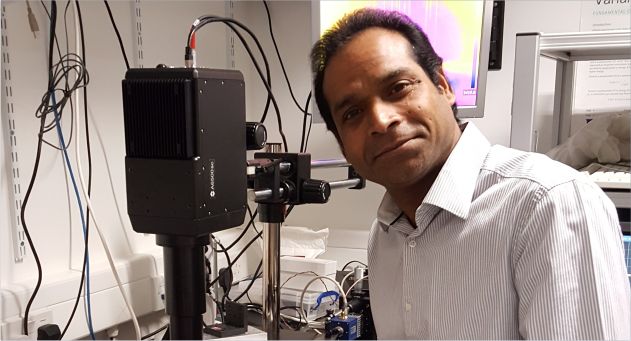Photonics is all about generating and harnessing light whose basic unit is photons. Applications of photonics as an “enabling” technology are extremely broad and new innovations are making it as a trusting partner. Dr. Senthil Murugan Ganapathy is currently a Principal Research Fellow (Associate Professor) at Optoelectronics Research Centre at the University of Southampton. His expertise and research interests range from photonic materials to photonic systems with current focus and interest on “Mid-IR Materials and Devices for Biomedical Sensing Applications” and “Novel Optical Microresonators”. He has recently established and run the major Mid-IR characterisation facility worth more than £0.6M, which is unique for waveguide spectroscopy in the 2-14 μm spectral region. Apart from that, he has also published more than 160 journal and conference papers, 2 patents on new photonic glasses and is also the Editor of a book titled “Photonic Glasses and Glass-Ceramics”. Here is the excerpts of talk on photonics with Dr. Senthil Murugan Ganapathy in an interview with ELE Times discuss the advancement and opportunities in photonics. Excerpts
ELE Times: How will you define the Photonics Field in general and what are the latest technological revolution going worldwide on it?
Dr. Senthil Ganapathy : Photonics is nothing but the science of light. Light has dual nature, it is believed to exist in both wave and particle form. Particles of light called Photons interact with various bulk materials and structured materials in different ways to produce multitude of useful phenomena including simple transmission, amplification and lasing (emission of new wavelengths).
Major technological advances made in the last century in the field of electronics including miniaturisation and ultra-large scale integration had far reaching impacts on today’s consumer devices and communications. Electronics has almost reached its limit of miniaturisation, integration, and signal processing capability. The photon (an elementary particle) which is the basis for the field of photonics (as electrons are for electronics) can operate more than 1000 times faster than electrons and in emerging systems, so that photons are progressively replacing electrons in new devices, adding extra functionality, fidelity and speed, and opening up totally new opportunities. The laser (the most innovative key enabling tool in photonics), the glass fibre (a light wire), integrated optical chips and displays/LEDs are some of the components already perfusing our day-to-day life. Photonics find applications in each and every aspect of our life including communications, manufacturing and health-care.
Remarkable contribution to the fast internet we are enjoying today was made from our department, Optoelectronics Research Centre at the University of Southampton, especially by Prof. Sir David Payne and his team in developing various special fibres used today in the 1970sand optical amplifiers in the 1980s, together they form the backbone of the fast internet.








